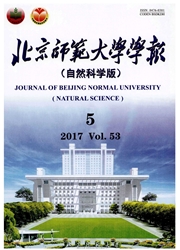

 中文摘要:
中文摘要:
城市边缘区的扩展状况密切关系着城市空间结构和形态的演变.基于1994、2000、2005、2009年4个时期TM影像资料提取出的建设用地数据,通过建设用地扩展强度指数、建设用地扩展规模系数和建设用地密度指标,利用象限缓冲区分析法将大兴区分成8个象限进行扩展分析,研究1994—2009年大兴区建设用地扩展的时空分异特征.分析表明,大兴区在15a间建设用地剧烈增加,且增加的强度越来越快;各区建设用地密度的差距越来越大,但差距并非均等变大;大兴区建设用地扩展影响因素主要是自然因素、社会经济因素、交通因素与政策因素.
 英文摘要:
英文摘要:
Expansion of urban fringe has close relationship with urban spatial structure and formation evolution. The expansion of district Daxing in quadrant buffer areas of 8 directions was analyzed based on built- up area data extracted from TM remote sensing images in 1994, 2000, 2005, 2009, in order to study temporal and spatial characteristics of built-up area expansion from 1994 to 2009, by expansion intensity index, expansion scale index and built-up area density. It was found that built-up area in Daxing increased rapidly and its intensity index was progressively higher; Gaps of built-up density in different directions become progressively larger, rather unevenly; The driving factors of built-up area expansion in district Daxing were mainly natural factors, social economic factors, transportation factors and policy factors.
 同期刊论文项目
同期刊论文项目
 同项目期刊论文
同项目期刊论文
 期刊信息
期刊信息
